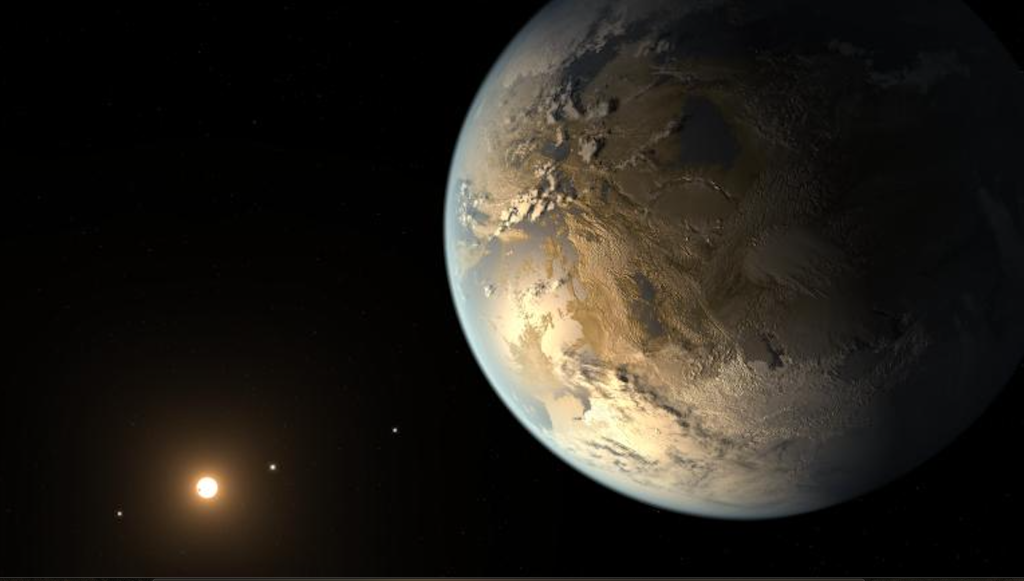For a planet to thrive, it needs a pretty balanced relationship with its nearest star—think of Earth in relation to the Sun.
So when astronomers announced the discovery of Kepler-438b—one of the most Earth-like exoplanets yet to be discovered in our Solar System—many were excited that it might have the potential to support some kind of life. But now researchers suggest that the irradiated blasts the exoplanet receives from its nearest star make that highly unlikely.
Videos by VICE
In a study published on Arxiv and accepted by the Monthly Notices of the Royal Astronomical Society, researchers from Denmark and the UK describe how radiation bursts equivalent to around 100 billion megatons of TNT emitted from the Red Dwarf star Kepler-438 lambast exoplanet Kepler-438b every few hundred days. This basically strips the planet of its atmosphere, rendering it inhospitable to life forms.
The researchers made this discovery by detecting superflares (excess radiation) emitted from the Red Dwarf star using photometry—a technique that measures the intensity of an astronomical object’s electromagnetic radiation.

Drawing of a hypothetical exoplanet around a Red Dwarf. Image: NASA/Harvard-Smithsonian Center for Astrophysics/D. Aguilar
“We measured how bright this star [Kepler-438] was over time using photometry,” David Armstrong, lead author of the paper and an astrophysicist at Warwick University, explained over the phone. “If you can see even a small change of increasing brightness it means a huge amount of extra energy is being emitted.”
But it’s not actually these visible superflares that irradiate the hell out of Kepler-438b. Coronal mass ejections—when a star spews out huge amounts of plasma and radiated particles—do most of the dirty work.
Armstrong explained that coronal mass ejections aren’t actually visible through photometry, but are associated with super flares. In other words, wherever there’s a super flare, there’s bound to be a coronal mass ejection not far behind.
As the ejections strip Kepler-438b of atmosphere, it subjects the planet to the evils of X-ray radiation and harsh UV, which is crippling for life as we know it.
“We have trouble imagining what kind of life there could be, or what conditions it could deal with.”
As outer space satellite projects like the Kepler mission discover more exoplanets, researchers continue to pose questions about their habitability. They glean their data from a dataset called the Habitable Exoplanet Catalogue, which lists what we believe to be the most life-friendly planets outside our Solar System.
The researchers did take a look to see if other exoplanets like Kepler-186f were subject to similar radiation bursts, but found this one was clear of them. While it might be a tad disappointing to find out that life forms probably won’t make it on the most Earth-like planet that we discovered thus far, Armstrong didn’t totally rule out the possibility of life existing on Kepler-438b.
The researchers still don’t know if the Kepler-438b has a magnetosphere, and Armstrong said that if it did, it might help shield it a bit from those irradiated blasts.
He remained open-minded about the types of life forms that could be out there. “We have trouble imagining what kind of life there could be, or what conditions it could deal with,” said Armstrong.
Who knows—maybe there’s still a chance of discovering aliens on Earth’s far-away relative.
Correction: The original headline on this piece said the exoplanet is probably inhabitable. Obviously, it’s the opposite.



